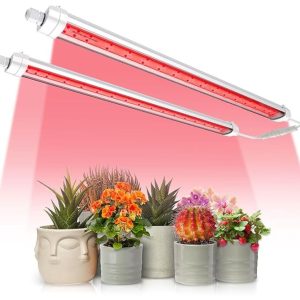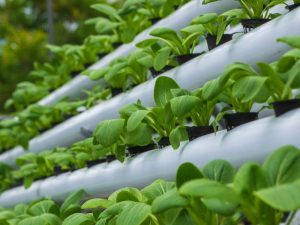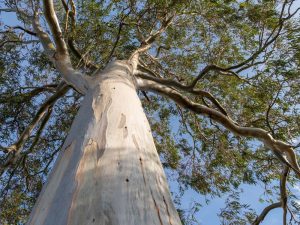Sunlight varies with season and weather. Gardeners can offset those fluctuations with targeted LED bars and smart timers. Adding extra photons at key hours strengthens stems and deepens leaf color. It also extends bloom windows and accelerates fruit ripening. The right supplemental light for outdoor plants can turn a marginal harvest into a bumper one.
In this post, we’ll break down the science behind the supplemental spectrums and explore how each one impacts plant growth, flowering, and overall harvest quality.
Understanding Supplemental Light in Outdoor Gardens
Contents
Outdoor gardens thrive under the sun yet clouds, short days, or shade create light gaps that stunt growth. Supplemental fixtures quickly fill those gaps effectively.
Gardeners fight unpredictable skies all year. Winter days are brief and the sun sits low, sending weak rays across the plot. Summer brings stronger light yet tall trees, fences, or nearby houses can cast midday shade. Cloudy weeks and storm fronts stack the odds further. Plants sense these deficits fast.
Photosynthesis slows, flowers drop, and fruit sets late. Supplemental light bridges those gaps, delivering consistent intensity and spectrum even when nature falls short. It lets you control day length, brightness, and plant health.
Leaves hold tiny photoreceptors that read color, intensity, and duration. Blue and red receptors govern stem length, leaf expansion, and flowering cues. When supplemental LEDs switch on, those sensors treat the photons like sunlight. Chloroplasts ramp up energy capture, while phytochrome pigments reset the plant’s internal clock.
That shift boosts carbohydrate production and directs hormones toward growth or bloom, depending on spectrum. A steady dose at dawn wakes sleepy foliage. An evening top-up extends photosynthesis without disturbing night cooling. The result is stronger tissue and predictable yields.
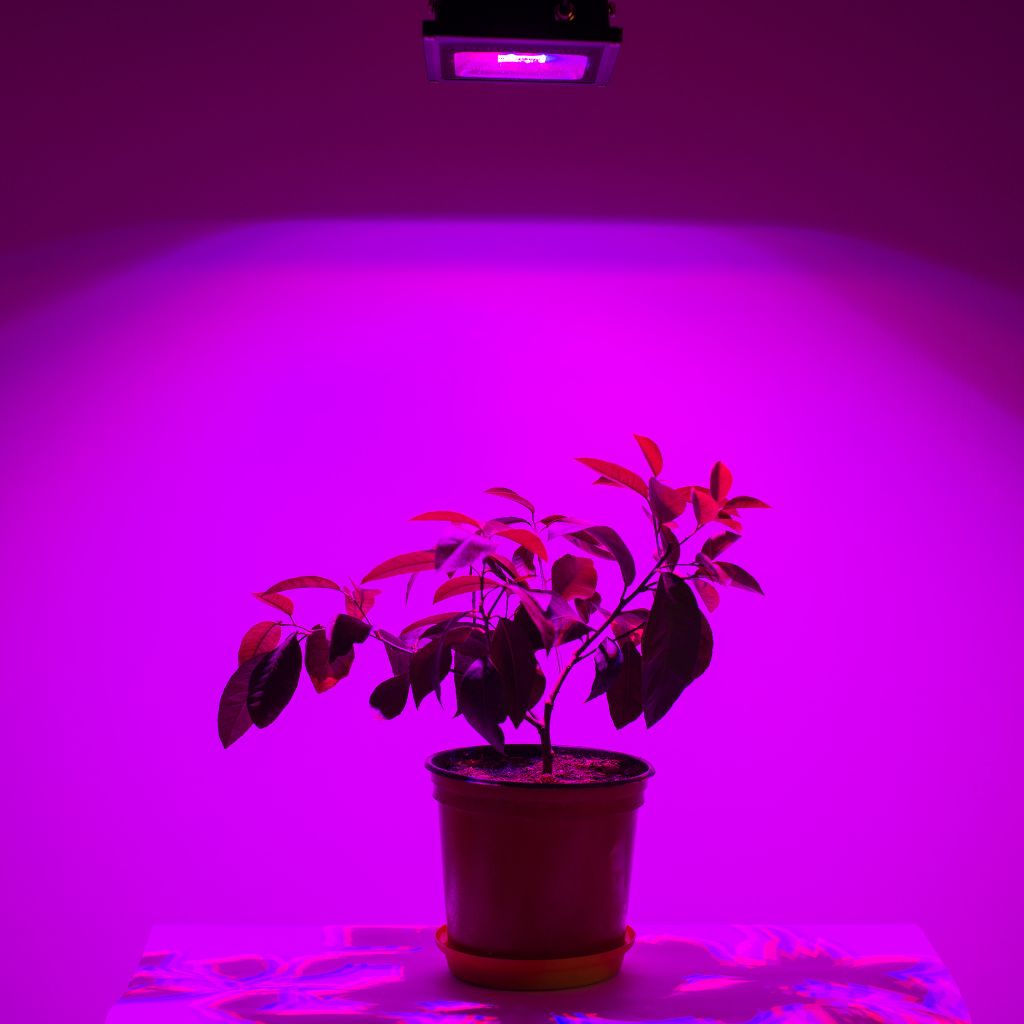
Precision Spectrums That Supercharge Outdoor Crops
Smart gardeners supplement sunlight with narrow-band LEDs that deliver exact cues plants need. The result is stronger growth, faster bloom, and richer flavors.
UV Light (100–400 nm)
Ultraviolet LEDs sit just beyond visible violet. Plants treat this radiation as a mild threat and thicken their natural armor. Resin glands swell, colors deepen, and subtle aromas sharpen. Use too much and cells scorch, so moderation is essential.
Key benefits
- Boosts trichome density for higher essential-oil content
- Improves flavor, color, and nutrient profiles in fruits and greens
- Reduces mildew spores and deters some soft pests
How to use
- Run UV bars 1–3 hours near midday during the final bloom weeks
- Keep fixtures at least 45 cm above tops to prevent leaf burn
- Watch for bronzing; cut exposure if tips yellow
IR Light (700–750 nm)
IR light lie just past visible red. They slip through leaves easily and tweak the red/far-red ratio that governs flowering hormones. Stems stretch a little, buds set sooner, and the canopy relaxes into a breathable shape. A brief burst at lights-off mimics sunset and signals plants to rest.
Key benefits
- Speeds floral initiation when paired with red light
- Adds gentle elongation to open tight nodes
- Helps align the plant’s night-time hormone cycle
How to use
- Mix far-red with deep-red bars during early to mid bloom
- Add a 15- to 20-minute dusk pulse after main lights shut off
- Limit output to avoid extra canopy heat
Deep Red Light (660 nm)
Deep-red LEDs strike chlorophyll at its absorption peak. Sugars rise quickly, flower sites stack, and energy pours into fruit fill. Phytochrome switches flip, telling the plant that daylight is strong and the season is ripe for reproduction. Even lower leaves catch photons when side bars push light between rows.
Key benefits
- Drives rapid photosynthesis for dense blooms and fruit
- Triggers phytochrome responses that shorten time to harvest
- Lifts total yield by energizing hidden canopy layers
How to use
- Switch on deep-red rails the day you flip to bloom
- Match the main 12-hour photoperiod; mount bars at canopy level
- Aim for roughly 50 µmol m⁻² s⁻¹ to prevent curl
Blue Light (400–500 nm)
Blue light wavelengths sculpt young plants. Cryptochromes and phototropins read the signal, keeping internodes tight and leaves broad. Chlorophyll builds fast, giving seedlings a deep green hue and roots the energy to branch. Leafy crops stay compact yet lush when blue remains part of the mix all season.
Key benefits
- Prevents stretch and builds stout stems
- Increases chlorophyll for thicker, darker foliage
- Encourages strong root architecture in starts and transplants
How to use
- Add extra blue for at least six hours in vegetative beds
- Place bars 30 cm above seedlings to avoid chill yet guide shape
- Maintain a blue-rich blend for herbs and greens until harvest
Timing and Photoperiod Strategies
Seasonal clouds and shorter days limit solar energy. Supplemental light for outdoor plants fills the gap, but precise timing dictates whether each extra photon converts into harvestable biomass.
Dawn stimulation vs dusk extension
Cool-season mornings and short autumn evenings leave many crops under-lit. A low-watt boost before sunrise jump-starts photosynthesis and lets leaves dry fast, while a brief glow after sunset extends day length without mid-day heat. These opposing cues let you target specific hormones and keep growth on schedule.
- Switch on low-intensity bars one hour before nautical dawn to wake plants gently
- Use mostly blue light at dawn to curb stretch and deepen color
- Run red-heavy bars for 20–30 minutes after sunset to lengthen the photoperiod for lettuce, basil, and spinach
- Keep total added time under two hours to avoid circadian confusion
Midday supplementation on cloudy days
Heavy clouds can slash usable light by half even at noon. A controlled pulse of supplemental light for outdoor plants restores the daily light integral so leaves keep building sugars. Short sequences cut costs and prevent heat build-up in already humid air.
- Check hourly forecasts; arm fixtures only when irradiance drops below 300 µmol m⁻² s⁻¹
- Deliver roughly 40 µmol m⁻² s⁻¹ at canopy level during the darkest two hours
- Use a lux sensor or PAR meter to trigger lights automatically
- Shut boosters off when sunlight returns to avoid oversaturation and wasted power
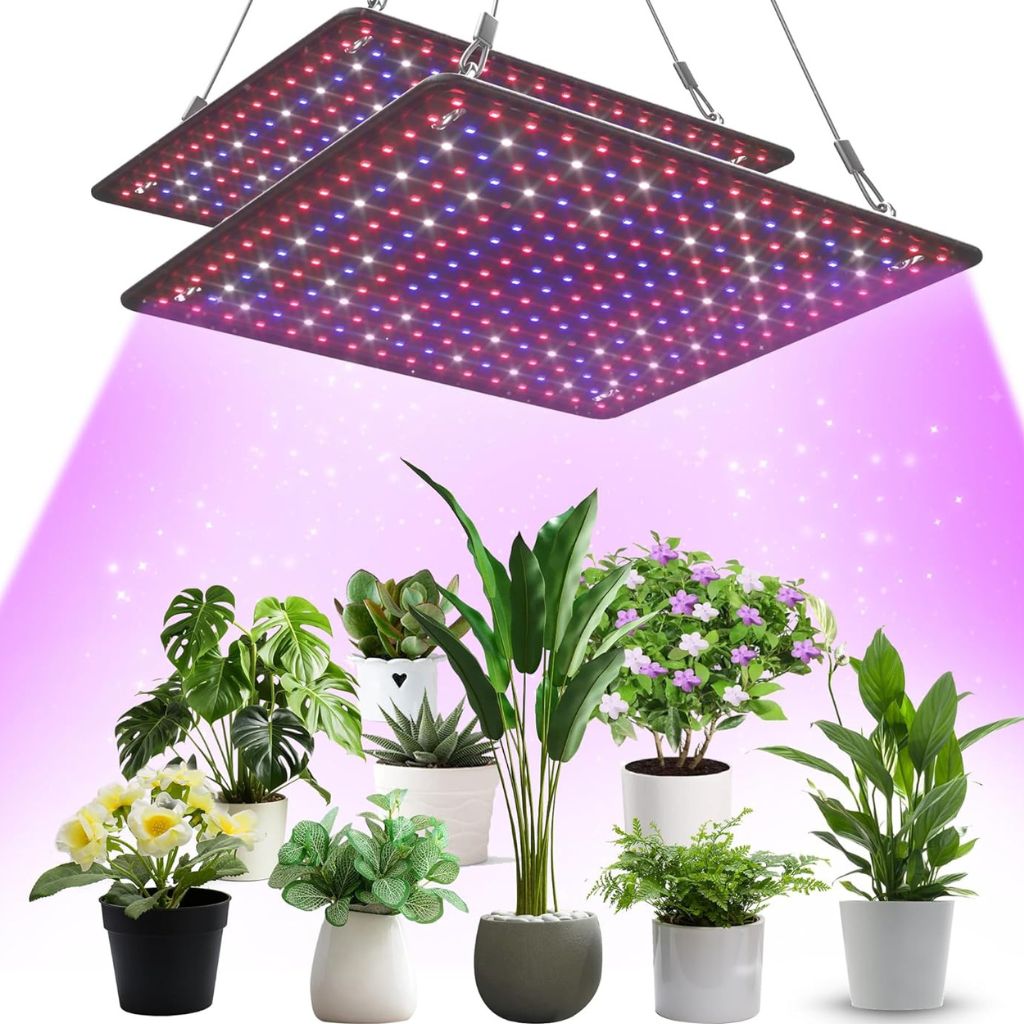
Balancing photoperiod with plant life stage
Each crop reads night length to decide when to bloom. Matching light schedules to its genetic preference trims vegetative time and prevents premature bolting. Gentle transitions guard against hormonal shock that can cut yield.
- Track sunrise and sunset for your latitude with a garden app
- Give seedlings 14–16 hours of mixed blue-red light for rapid cell division
- Hold fruiting crops at 12 hours on, 12 hours off once buds appear
- Adjust in 15-minute steps over several evenings whenever you change day length
Automating schedules with smart tech
Manual timers work for a patio tray, but large beds need precision. Smart plugs and weather-sync apps fire lights only when they help, saving energy and labor. Consistent timing also evens out growth, which matters when you sell produce.
- Use Wi-Fi plugs linked to an astronomical clock so dawn and dusk cues shift automatically through the season
- Pair light bars with PAR sensors; let them dim or shut off when clouds clear
- Add soil-moisture probes that pause lighting if beds dry too fast
- Review weekly data logs and trim runtimes that don’t raise canopy PAR
Energy Use, Costs, and Sustainability Tips
Watts add up quickly when fixtures run nightly. Learning to power supplemental light for outdoor plants efficiently keeps bills manageable while still delivering the brightness crops crave.
Calculating kilowatt-hours and cost forecasts
Know what each unit really draws before you plan an upgrade.
- Read actual wattage at the plug, not on the box.
- Multiply that watt figure by daily run time to get watt-hours.
- Divide by 1 000 for kilowatt-hours, then multiply by your full utility rate.
- Include delivery fees and taxes so the total matches your statement.
- Project a monthly cost. Revise dimming schedules or swap fixtures if numbers look steep.
Leveraging solar panels and batteries
Solar offset cuts grid demand and shields you from price hikes.
- A single 200 W panel can drive four hours of evening light on a small bed.
- Charge lithium iron phosphate batteries at midday when panels over-produce.
- Discharge at dusk to run LEDs, keeping the circuit clean and quiet.
- Mount charge controllers in a weatherproof box and track flow on a phone app.
- Check local rebates. Incentives often cover a big slice of hardware costs.
Fixture efficiency and heat management
Efficient diodes deliver more photons and less waste heat.
- Choose units rated above 2 µmol J⁻¹. They pay for themselves in one season.
- Keep drivers off the canopy to avoid hot spots.
- Use aluminum fins or clip-on fans when ambient temps top 30 °C.
- Ventilate beds or add shade cloth if leaf temps climb into the high twenties.
- Replacing old halogen floods with LED bars can cut energy use in half.
Extending lifespan through maintenance and sizing
Good care stretches every dollar you invest in lighting.
- Wipe lenses monthly so dust never blocks output.
- Inspect gaskets after storms and replace any that crack.
- Give drivers at least 20 % headroom so they never run flat out.
- Keep spare fans and fuses on hand for quick swaps.
- Retire aging fixtures before peak season to avoid sudden failures that hurt yield.
Common Pitfalls and Troubleshooting
Even experienced growers misfire when upgrading systems. Understanding the frequent errors around supplemental light for outdoor plants prevents stress symptoms, wasted energy, and neighbor complaints.
Identifying and Fixing Light Burn
Intense beams can scorch upper foliage. Leaves curl upward, edges bleach, and photosynthesis stalls. This damage happens fast when supplemental light for outdoor plants hangs too close.
- Measure the diode-to-canopy distance and keep at least 30 cm of clearance
- Dim the output first, then raise fixtures slowly to avoid shock
- Use the hand-heat test; light should feel warm, never hot
- Prune lightly singed tips so energy moves to healthy tissue
- Shorten photoperiod a few days if bleaching spreads, then restore gradually
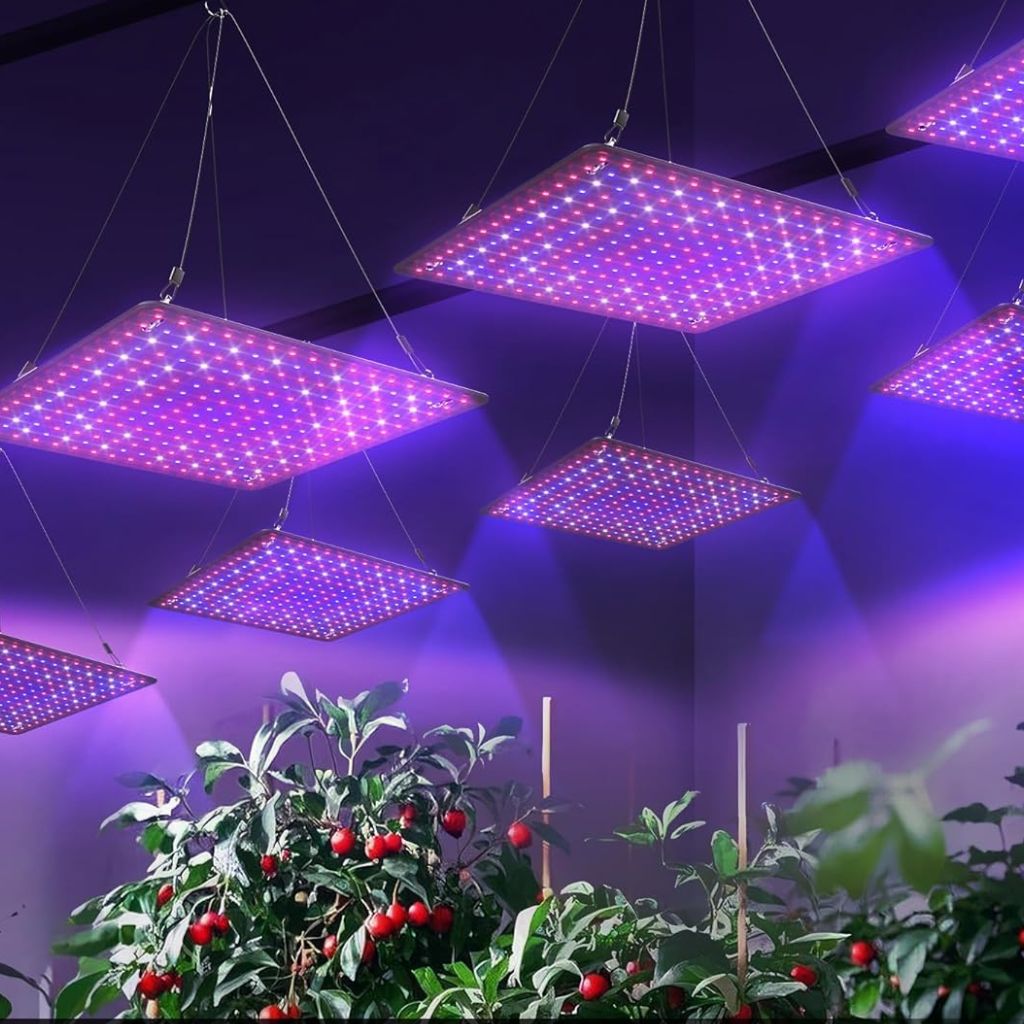
Integrating Watering and Feeding With Higher Light
Extra photons speed transpiration. Soil dries, nutrient uptake spikes, and deficiencies appear. Yield suffers if hydration and fertility lag behind your lighting upgrade.
- Increase irrigation frequency or switch to drip lines with pulse timers
- Raise nutrient strength 10 % and add slow-release granules for steady supply
- Check potassium and calcium ratios to stop tip burn during rapid growth
- Mulch beds to trap moisture and moderate root temperature
- Test runoff EC weekly; flush if salts climb above target range
Recognizing Spectrum Deficiencies Early
Plants signal missing wavelengths through shape and color. Stretchy stems hint at blue scarcity, slow buds point to weak red. Ignoring early clues wastes the gains from supplemental light for outdoor plants.
- Keep a photo log of leaf color, internode length, and bud count
- Rotate fixtures or tweak channel ratios at the first sign of imbalance
- Add pocket spectrometer checks to confirm actual output, not just label claims
- Apply micro-doses of UV or far-red to fine-tune hormonal cues
- Reassess every seven days so minor issues never reach yield-loss stage
Managing Neighborhood Light Trespass and Regulations
Bright diodes can spill past fences and trigger complaints or fines. Dark-sky rules grow stricter each year, so prevention beats apology.
- Fit narrow-beam lenses and down-facing shields to confine glow to crops
- Install motion sensors or timers that dim bars after midnight
- Use warm-white path lights and reserve high-intensity arrays for enclosed beds
- Plant hedges or erect screens to block stray photons at property lines
- Review local codes, document compliance, and share surplus produce to keep neighbors on your side
Final Thoughts
Understanding and using grow lights isn’t just for expert growers anymore. It’s one of the most accessible and effective ways to level up your grow. Whether you’re pushing for higher yields, more potent harvests, or simply healthier plant structure, UV, IR, Deep Red, and Blue light each bring something unique to the table.
With the right combination and timing, supplemental light for outdoor plants can transform a good grow into a great one, backed by real plant science.


